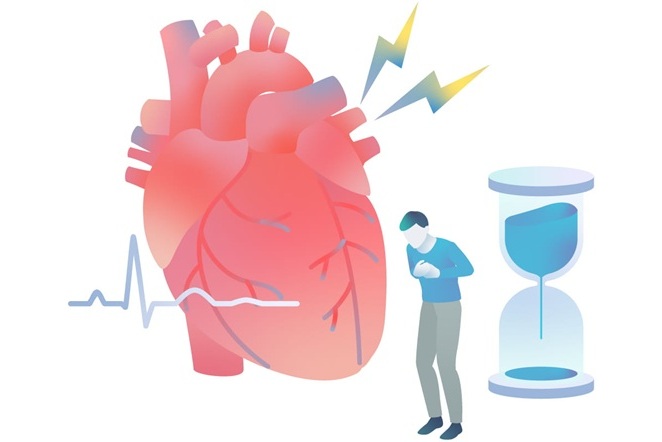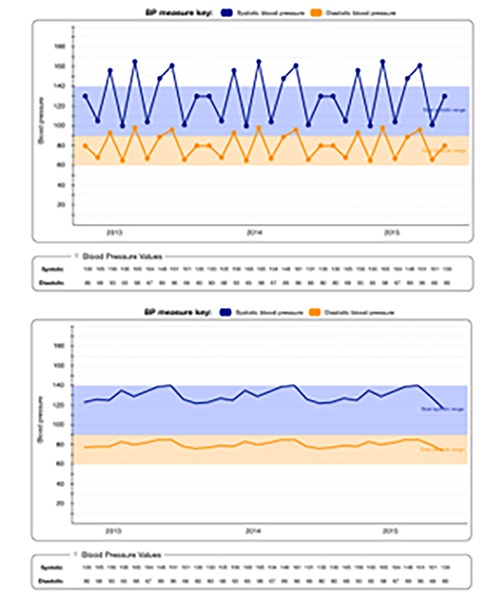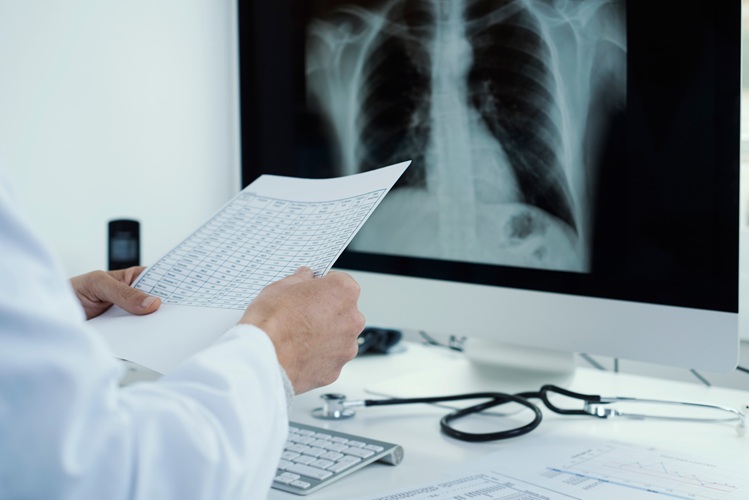External Fixation Device Helps Correct Limb Deformity
|
By HospiMedica International staff writers Posted on 23 Oct 2017 |

Image: A multiaxial external fixation device uses 3D planning software for optimum treatment (Photo courtesy of DePuy Synthes).
A new orthopedic correction system helps improve the accuracy of a deformity correction plan with the assistance of three-dimensional (3D) planning software.
The DePuy Synthes (West Chester, PA, USA) MaxFrame Multi-Axial Correction System is an external circular fixation device used to gradually correct bone or soft tissue deformities in the arm, leg, foot, or ankle. The system's 3D planning software creates accurate patient treatment plans using advanced algorithms, which eliminate the need for manual measurement, potentially leading to a reduction in the number of patient X-rays required, and thus reducing procedural complexity, radiation exposure, overall costs, and treatment time.
The system is indicated for fracture fixation (both open and closed), pseudoarthrosis of long bones, limb lengthening (via epiphyseal or metaphyseal distraction), correction of bony or soft tissue deformities, joint arthrodesis, treatment of infected fractures or non-unions, and correction of segmental defects. Patients undergoing treatment are responsible for adjusting the struts on the device as per their custom treatment plan. DePuy Synthes has also developed a patient care program and app that help patients prepare for surgery, manage treatment, and share their experiences through social media channels.
“There is a significant unmet need for treatment options that reduce both the burden to patients with limb deformities as well as surgical complexity,” said I.V. Hall, worldwide platform leader of Trauma, CMF, Biomaterials, and Veterinary Portfolios at DePuy Synthes. “With the launch of the MaxFrame system, we are building on our long history of innovation, excellence in service and support for surgeons with unique 3D planning software and digital tools that help address these needs and enhance patient and surgeon satisfaction.”
“The software eliminates significant sources of error inherent in earlier methods by removing the need to determine reference ring mounting parameters, as well as the requirement of ring orthogonality,” said Professor J. Spence Reid, MD, of Penn State University (Hershey, PA, USA). “The system also allows maximum flexibility in the location of strut attachment points on the ring which makes frame application easier, particularly in complex cases, and the Assure-Strut technology allows the patient to confidently make strut adjustments.”
Related Links:
DePuy Synthes
The DePuy Synthes (West Chester, PA, USA) MaxFrame Multi-Axial Correction System is an external circular fixation device used to gradually correct bone or soft tissue deformities in the arm, leg, foot, or ankle. The system's 3D planning software creates accurate patient treatment plans using advanced algorithms, which eliminate the need for manual measurement, potentially leading to a reduction in the number of patient X-rays required, and thus reducing procedural complexity, radiation exposure, overall costs, and treatment time.
The system is indicated for fracture fixation (both open and closed), pseudoarthrosis of long bones, limb lengthening (via epiphyseal or metaphyseal distraction), correction of bony or soft tissue deformities, joint arthrodesis, treatment of infected fractures or non-unions, and correction of segmental defects. Patients undergoing treatment are responsible for adjusting the struts on the device as per their custom treatment plan. DePuy Synthes has also developed a patient care program and app that help patients prepare for surgery, manage treatment, and share their experiences through social media channels.
“There is a significant unmet need for treatment options that reduce both the burden to patients with limb deformities as well as surgical complexity,” said I.V. Hall, worldwide platform leader of Trauma, CMF, Biomaterials, and Veterinary Portfolios at DePuy Synthes. “With the launch of the MaxFrame system, we are building on our long history of innovation, excellence in service and support for surgeons with unique 3D planning software and digital tools that help address these needs and enhance patient and surgeon satisfaction.”
“The software eliminates significant sources of error inherent in earlier methods by removing the need to determine reference ring mounting parameters, as well as the requirement of ring orthogonality,” said Professor J. Spence Reid, MD, of Penn State University (Hershey, PA, USA). “The system also allows maximum flexibility in the location of strut attachment points on the ring which makes frame application easier, particularly in complex cases, and the Assure-Strut technology allows the patient to confidently make strut adjustments.”
Related Links:
DePuy Synthes
Latest Surgical Techniques News
- DNA Origami Improves Imaging of Dense Pancreatic Tissue for Cancer Detection and Treatment
- Pioneering Sutureless Coronary Bypass Technology to Eliminate Open-Chest Procedures
- Intravascular Imaging for Guiding Stent Implantation Ensures Safer Stenting Procedures
- World's First AI Surgical Guidance Platform Allows Surgeons to Measure Success in Real-Time
- AI-Generated Synthetic Scarred Hearts Aid Atrial Fibrillation Treatment
- New Class of Bioadhesives to Connect Human Tissues to Long-Term Medical Implants
- New Transcatheter Valve Found Safe and Effective for Treating Aortic Regurgitation
- Minimally Invasive Valve Repair Reduces Hospitalizations in Severe Tricuspid Regurgitation Patients
- Tiny Robotic Tools Powered by Magnetic Fields to Enable Minimally Invasive Brain Surgery
- Magnetic Tweezers Make Robotic Surgery Safer and More Precise
- AI-Powered Surgical Planning Tool Improves Pre-Op Planning
- Novel Sensing System Restores Missing Sense of Touch in Minimally Invasive Surgery
- Headset-Based AR Navigation System Improves EVD Placement
- Higher Electrode Density Improves Epilepsy Surgery by Pinpointing Where Seizures Begin
- Open-Source Tool Optimizes Placement of Visual Brain Implants
- Easy-To-Apply Gel Could Prevent Formation of Post-Surgical Abdominal Adhesions
Channels
Critical Care
view channel
Breakthrough AI Technology Accurately Assesses Heart Failure Severity
Heart failure (HF) is a complex condition where the heart cannot effectively pump blood to meet the body’s needs due to underlying medical issues. It is marked by recurring episodes and frequent hospitalizations.... Read more
New Approach to Visualizing Blood Pressure Data Can Help Better Manage Hypertension Patients
Sometimes, a patient’s blood pressure may be elevated in a doctor's office but normal at home, a phenomenon known as white coat hypertension. It is estimated that 10% to 20% of high blood pressure diagnoses... Read morePatient Care
view channel
Portable Biosensor Platform to Reduce Hospital-Acquired Infections
Approximately 4 million patients in the European Union acquire healthcare-associated infections (HAIs) or nosocomial infections each year, with around 37,000 deaths directly resulting from these infections,... Read moreFirst-Of-Its-Kind Portable Germicidal Light Technology Disinfects High-Touch Clinical Surfaces in Seconds
Reducing healthcare-acquired infections (HAIs) remains a pressing issue within global healthcare systems. In the United States alone, 1.7 million patients contract HAIs annually, leading to approximately... Read more
Surgical Capacity Optimization Solution Helps Hospitals Boost OR Utilization
An innovative solution has the capability to transform surgical capacity utilization by targeting the root cause of surgical block time inefficiencies. Fujitsu Limited’s (Tokyo, Japan) Surgical Capacity... Read more
Game-Changing Innovation in Surgical Instrument Sterilization Significantly Improves OR Throughput
A groundbreaking innovation enables hospitals to significantly improve instrument processing time and throughput in operating rooms (ORs) and sterile processing departments. Turbett Surgical, Inc.... Read moreHealth IT
view channel
Printable Molecule-Selective Nanoparticles Enable Mass Production of Wearable Biosensors
The future of medicine is likely to focus on the personalization of healthcare—understanding exactly what an individual requires and delivering the appropriate combination of nutrients, metabolites, and... Read more
Smartwatches Could Detect Congestive Heart Failure
Diagnosing congestive heart failure (CHF) typically requires expensive and time-consuming imaging techniques like echocardiography, also known as cardiac ultrasound. Previously, detecting CHF by analyzing... Read moreBusiness
view channel
Expanded Collaboration to Transform OR Technology Through AI and Automation
The expansion of an existing collaboration between three leading companies aims to develop artificial intelligence (AI)-driven solutions for smart operating rooms with sophisticated monitoring and automation.... Read more

















